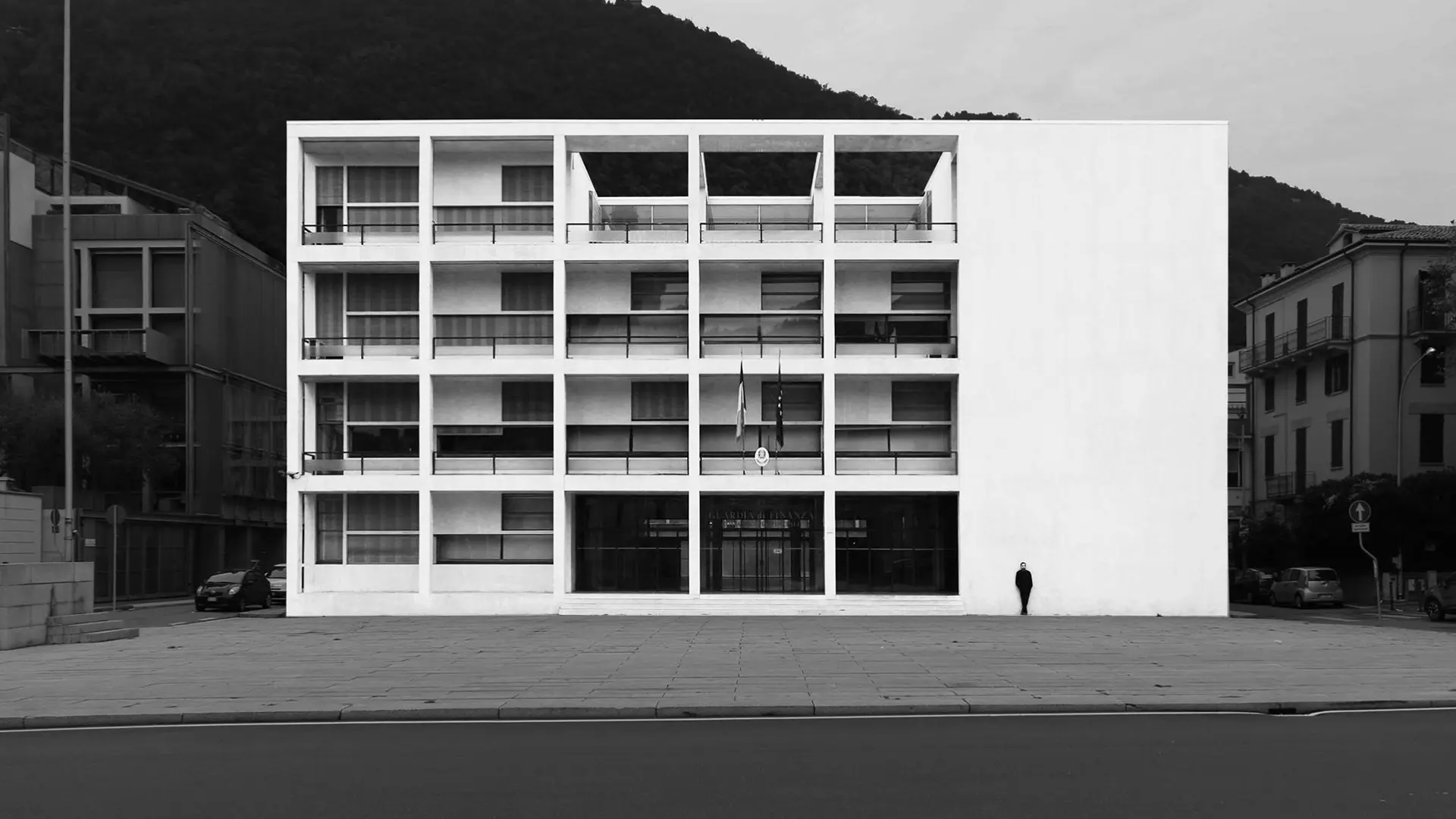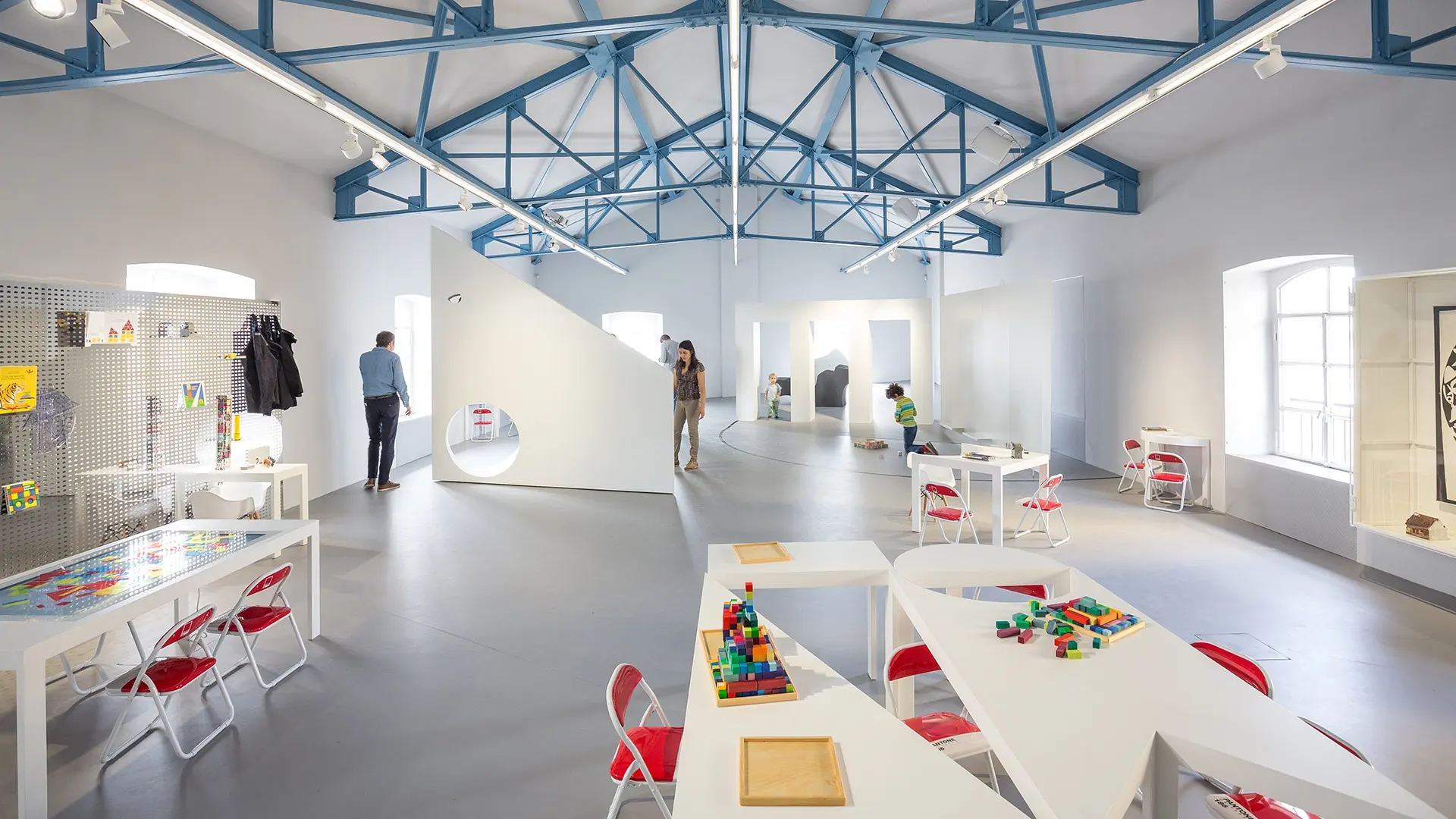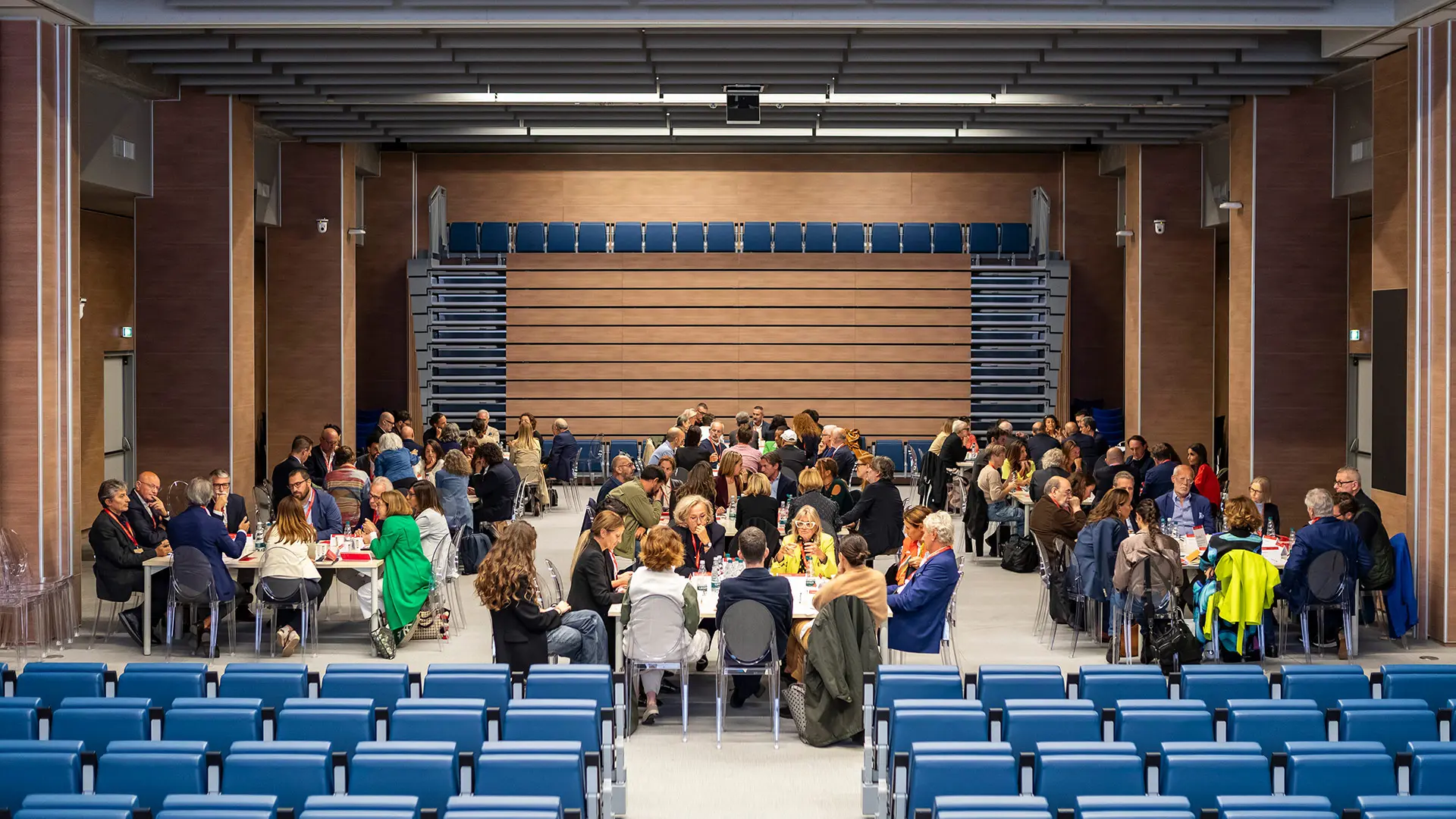Pure volumes, minimal or non-existent decoration, primacy of functionality, harnessing new materials: from the Casa del Fascio in Como to the railway station in Florence, the story of an experimental period that, after almost a century and several attempts at damnatio memoriae, remains a tangible presence in Italy.
The drafting machine: Sixties power
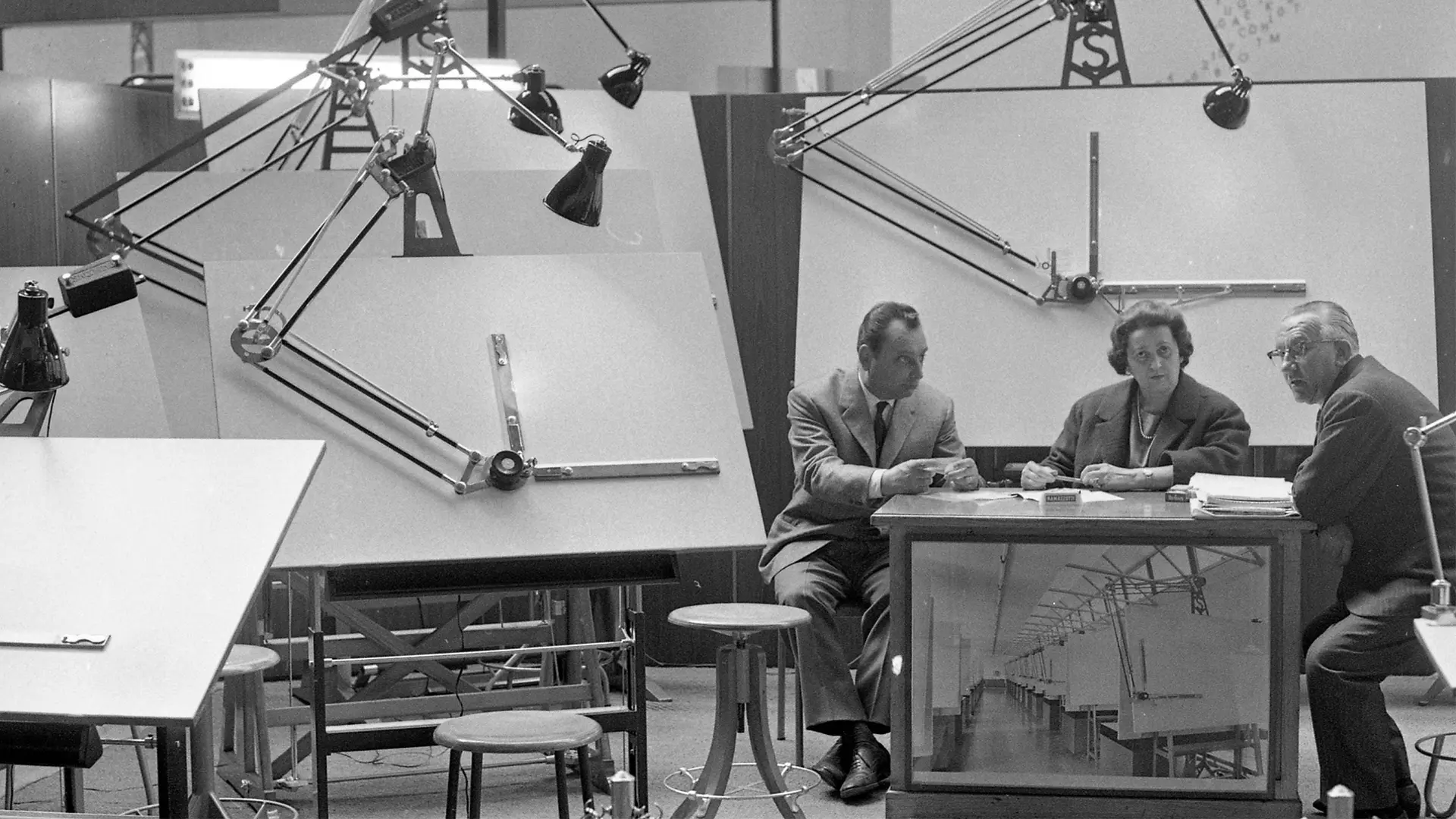
Interior of the equipment and supplies pavilion for technical offices at the Milan Trade Fair in 1963, courtesy Archivio Storico Fondazione Fiera Milano
In the run-up to the start of Salone del Mobile.Milano in June 2022, each week we’re taking a journey back into the past with previously-unseen images from the Fondazione Fiera Milano Archives, starting with workspace project design and discovering the joys of modernity!
In 1963, the sight may have conjured up thoughts of Benedictine monks bent over a tall, tilted, well-lit copy table. Not that there hadn’t been progress since that era, but that’s the image that comes to mind: bent-backed Franciscan friars devoted to the cause of knowledge, dissemination, safekeeping, and responsibility for advancement of the human species, beavering away in rectangular rooms neatly arranged in a grid... basically, offices!
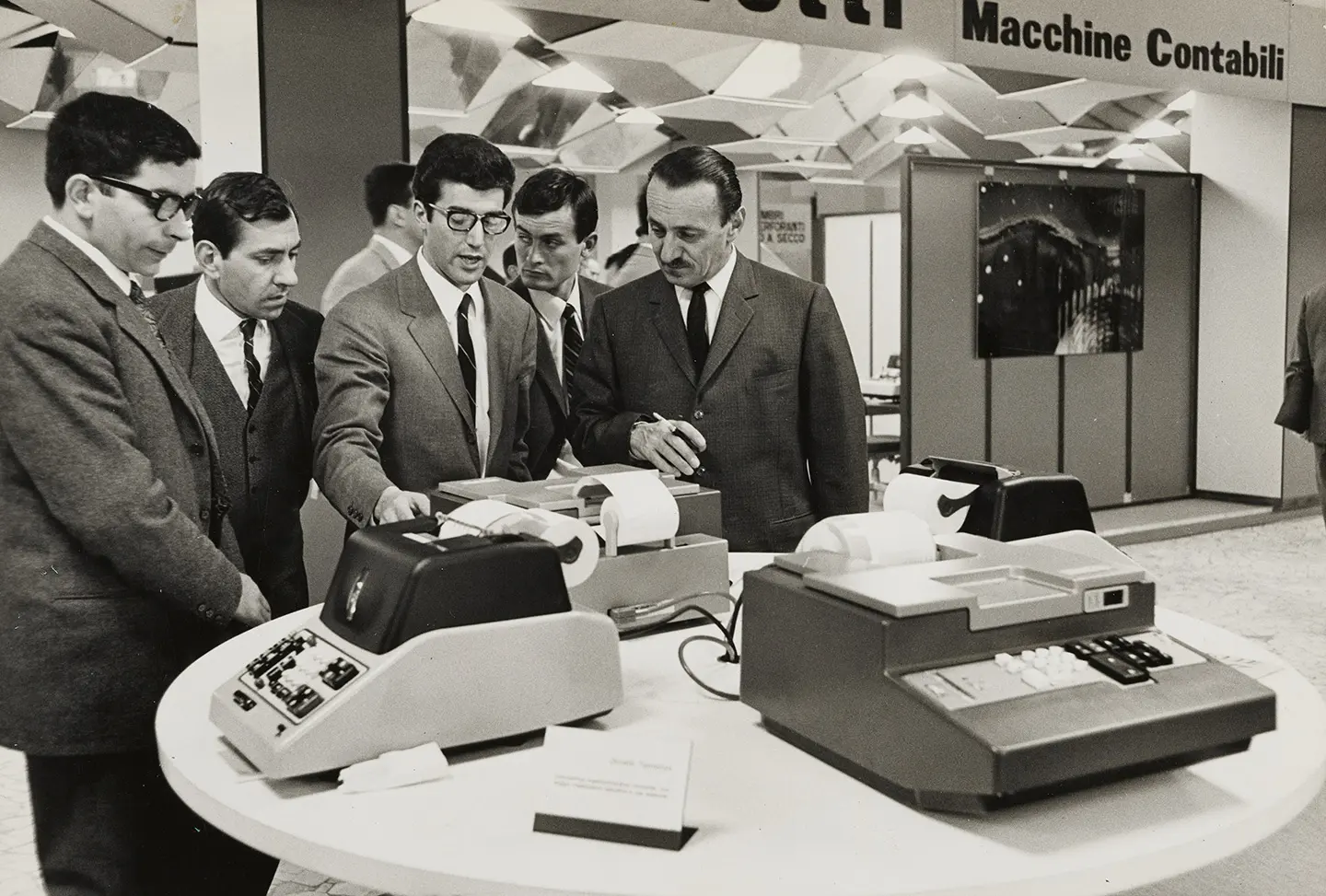
Olivetti stand at the Milan Trade Fair in 1967 (with electric calculator Logos 27-2 based on a mechanical project by Teresio Gassino and design by Ettore Sottsass), courtesy Archivio Storico Fondazione Fiera Milano
Workspaces have been a key driver of the inventions that the Italian supply chain has so successfully developed, better than and in advance of others, with a constancy of progression that has no equal – a merit Italians may rightfully claim because it is irrefutable: first the Fiera Campionaria, then Salone del Mobile.Milano bear witness to this journey frame by frame, as we may see in these images from the Fondazione Fiera Milano Archives, published here for the first time. When I first saw them, I turned on all the lights I could muster to honour this painstaking labour of testimony and preservation.
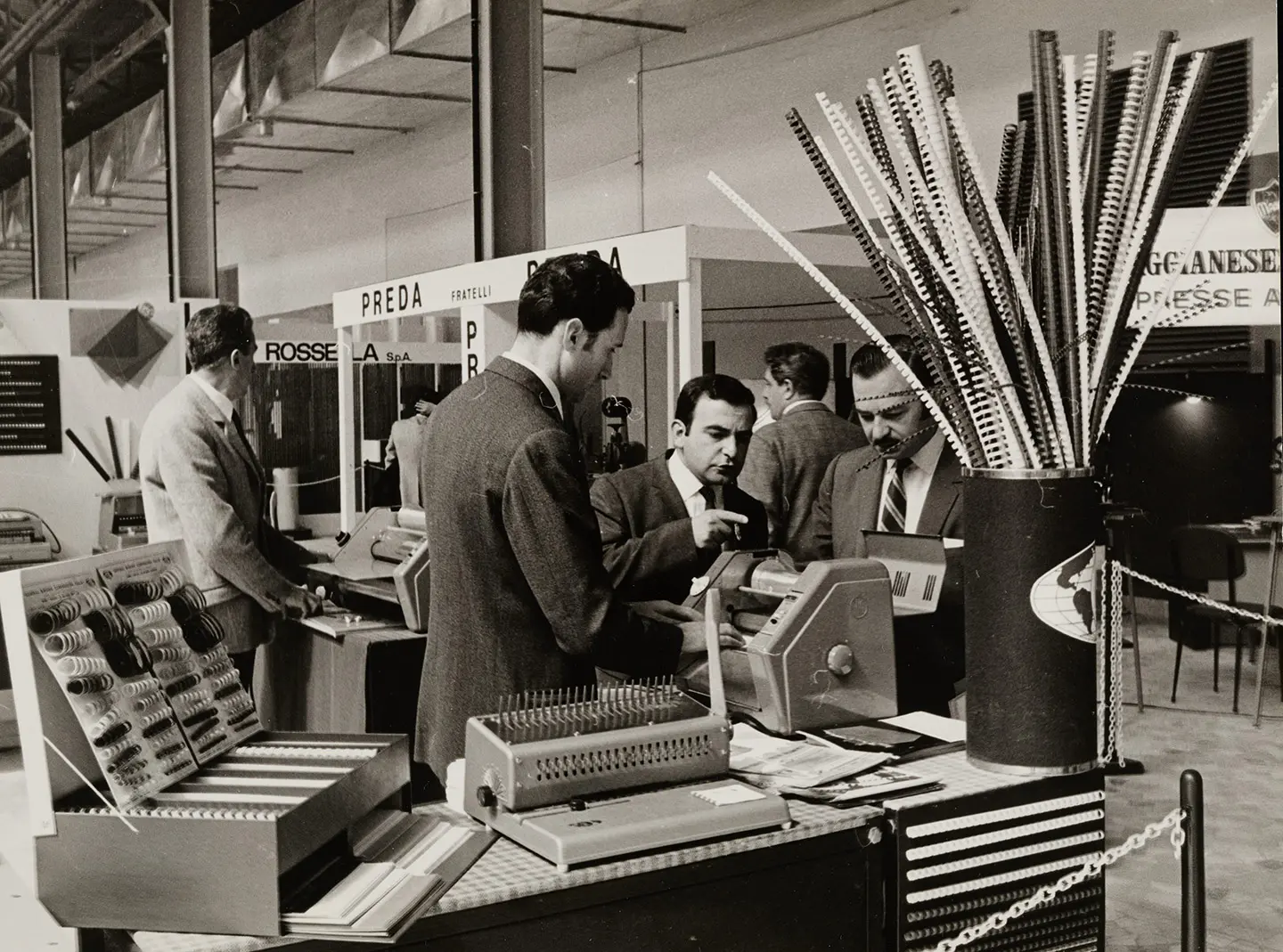
Office equipment at the 1969 Milan Trade Fair, courtesy Archivio Storico Fondazione Fiera Milano
This photo is emblematic: a drawing board with a drafting machine, a precision instrument used by thousands of students, staying up all night to be able to deliver drawings on time for exams, scraping off any errors made in ink with sharp razor blades, or used by countless professionals to draft entire buildings and interior layouts; all those meetings with clients who looked on in wonder as layers of tracing paper stuck down with tape created the precursor of a render, a bit like those games we had when we were kids, dressing up and accessorizing paper models solely by adding and removing paper garments, embellishing them with hats, shoes and bags of various shapes and sizes.
Read also Fondazione Fiera Milano and its precious archive
Nowadays, we see drafting machines in the windows of real estate agencies, in the home/museums of designers who made history in our small world (wisely saved by their heirs), in studios that have never been able to part with them (where I work, there’s one that’s still 100% in use), or in homes as part of the décor. This tidy, reassuring object, an evolutionary step in our workspaces, reached the height of its popularity from the 1960s onwards. It was not alone: it was accompanied by many other inventions or products that raised efficiency levels in step with the times.
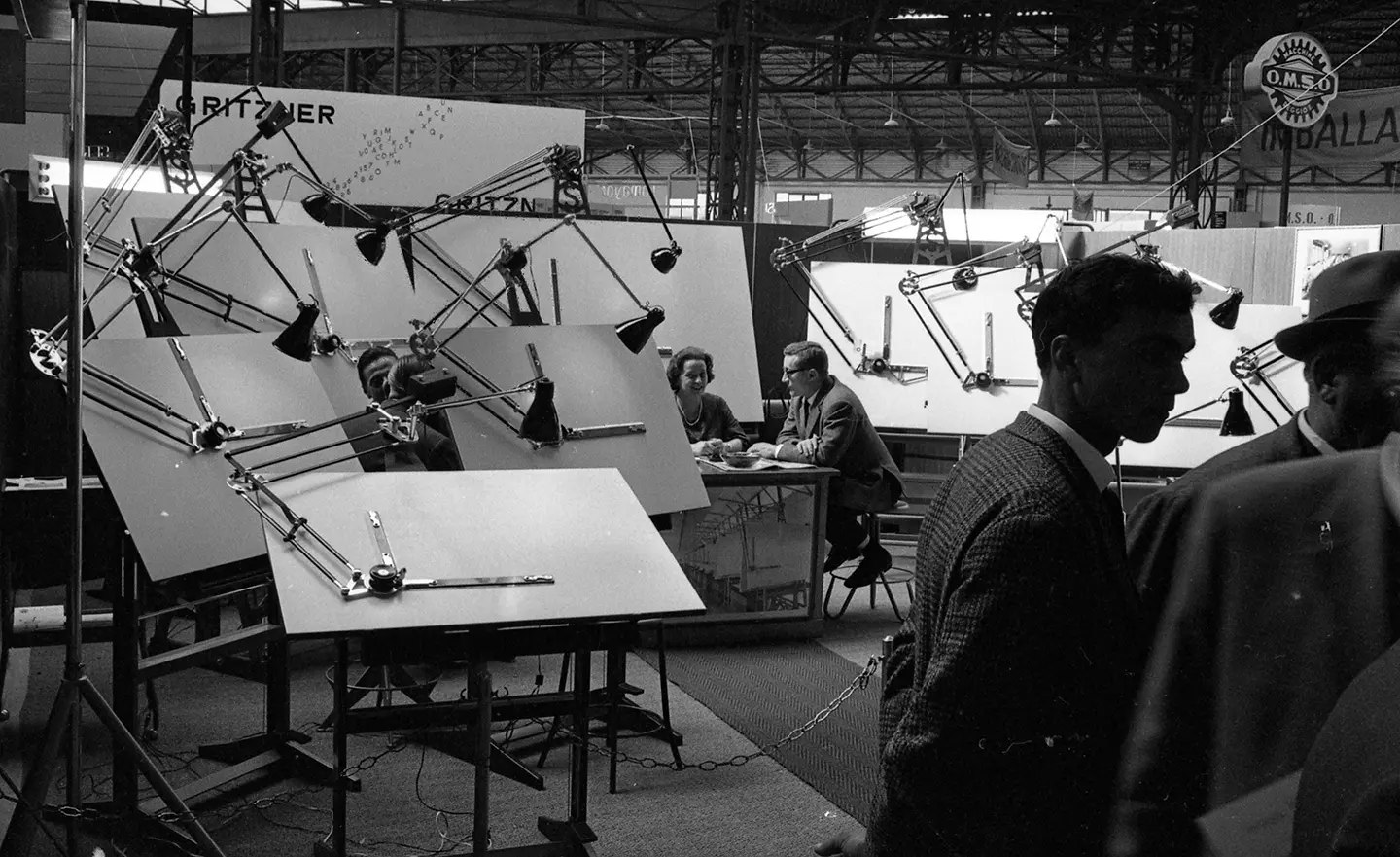
Interior of the equipment and supplies pavilion for technical offices at the Milan Trade Fair in 1963, courtesy Archivio Storico Fondazione Fiera Milano
When the Fair hosted a pavilion entirely dedicated to the office, many of the stands showcased the latest inventions under jewellers’-style cases, function and design competing in terms of importance. Early binding machines jostled with work chair ergonomics, space dividers, new desks, mobile walls, metal filing cabinets and a whole slew of increasingly precise and evolved drawing tools, until the computer came along and swept them all away. Modern as we are, we should interpret this transformation as a step forward and look back at the past without being overly romantic, (a hint yes, otherwise why all these re-editions? Just to make a bit of money? I sincerely doubt it), seeing where we came from, whether it’s to do with design, food or language.
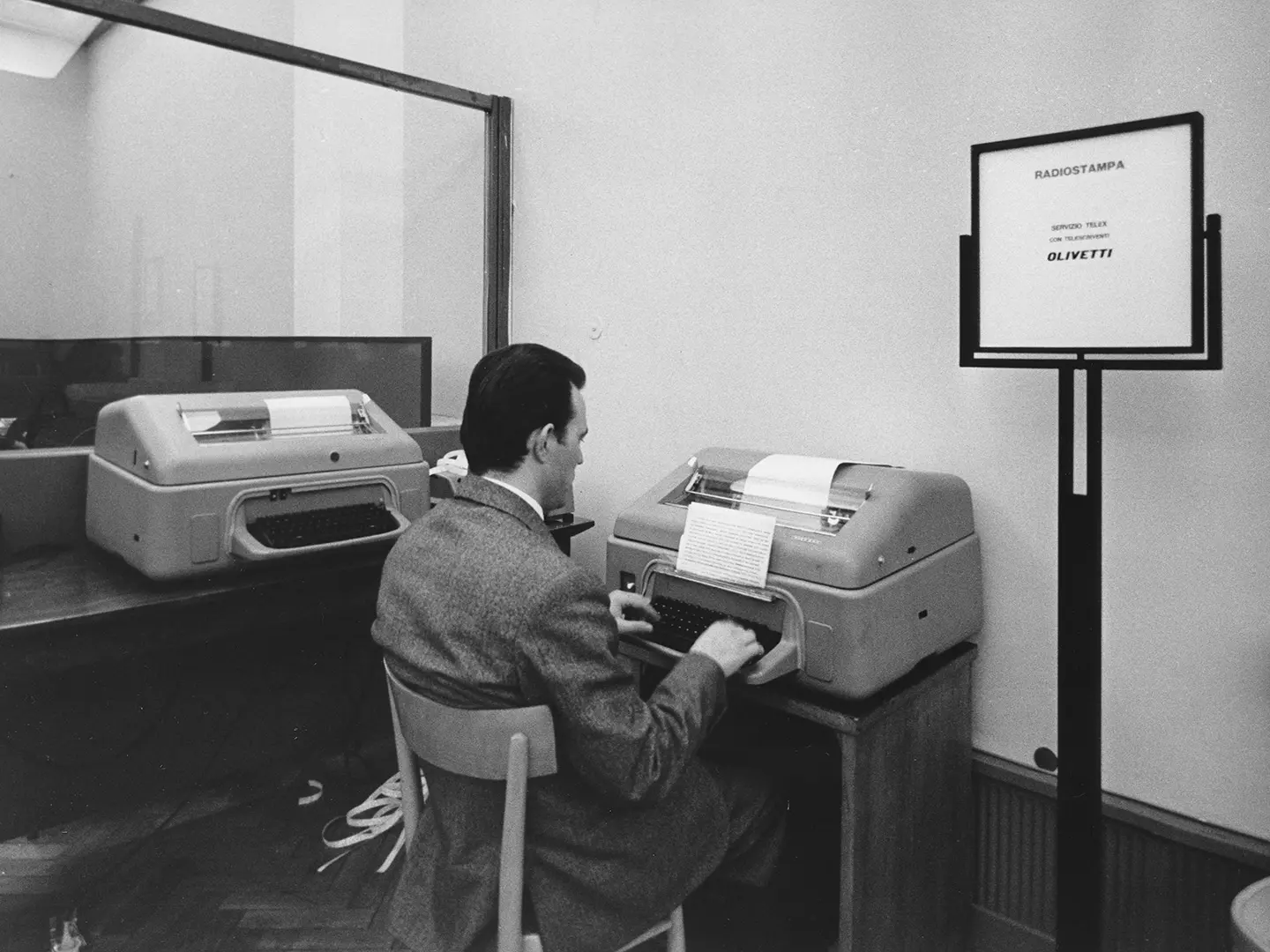
Telex service at Il Circolo della Stampa at the Milan Trade Fair in 1966, courtesy Archivio Storico Fondazione Fiera Milano
We’ve experienced a revolution in how we share our workspaces: new concepts of lighting, sharing and intellectual exchange to delve into in future installments. There is, however, one thing I fear I will always miss: the noise. My grandfather, a bank manager, would take me out of kindergarten early and whisk me off to see the offices he was so proud of. Childhood memories tend to be amplified, but the clack-clack-clack of keys, mechanical and by then electric too… I miss them so much. In fact, I sometimes press down on one key on my computer just to hear that fantastic clack-clack sound!
Today more than ever, we are beginning to see a radical new transformation in the office. Trade shows have always been the showcase for evolution, if you don’t mind... So let’s put those trench coats away in the wardrobe: we won’t be needing them in June! See you in Rho, and remember, the local metro stop is now part of the general Milan zone. Yay!






